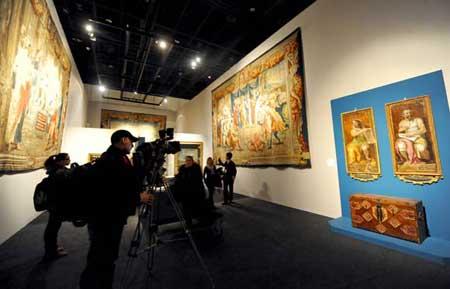Matteo Ricci: Building bridges in Ming China
2010-02-09 08:29 BJT
In 1577, Father Matteo Ricci was assigned to missions in the Far East. He left Italy, and after a formidable journey, finally arrived in Zhaoqing, of China's southern province of Guangdong, in 1583. There he began his lifelong mission to link the two great civilizations.
2010 marks the 400th anniversary of Ricci's death, and an exhibition was kicked off at Beijing's Capital Museum last Saturday that follows the footsteps of the great intellectual who created the first cultural bridge between China and the West.
 |
| 2010 marks the 400th anniversary of Ricci's death, and an exhibition was kicked off at Beijing's Capital Museum last Saturday that follows the footsteps of the great intellectual who created the first cultural bridge between China and the West. |
The first part of the exhibit reconstructs the cultural and artistic fabric of the West in Ricci's time, the years of the high Renaissance. And the second part presents the world that Matteo Ricci found in China when he arrived there and - through original documents and Chinese objects of the time - the experience of Ricci in his encounter and dialogue with the Chinese.
A selection of 200 works from leading Italian and Chinese museums are presented. On display for the first time are paintings by some of the most important Italian artists of the time, including Raphael, Titan, and Lorento Lotto. There are also tapestries, pottery, documents, and scientific instruments, which testify to the completeness and importance of the grafts of European knowledge and experience in China.
The Chinese exhibits evoke fundamental aspects of the Chinese civilization of Ricci's time: the language, writing, books, the three great religions, Confucianism, Buddhism, and Taoism. Also on display are the works produced by Ricci and his Chinese friends, maps and scientific instruments.

 Mail
Mail Share
Share Print
Print


 Video
Video









 2009 China Central Television. All Rights Reserved
2009 China Central Television. All Rights Reserved